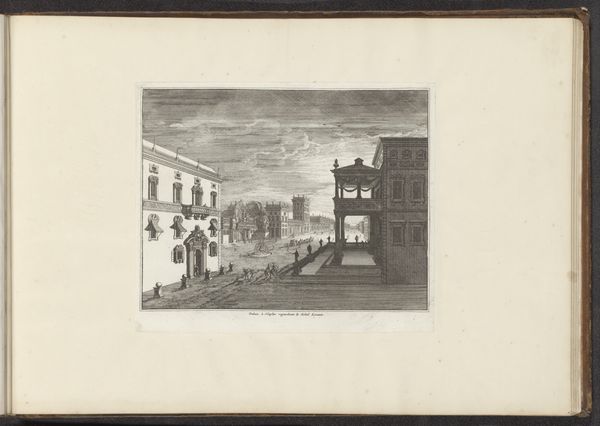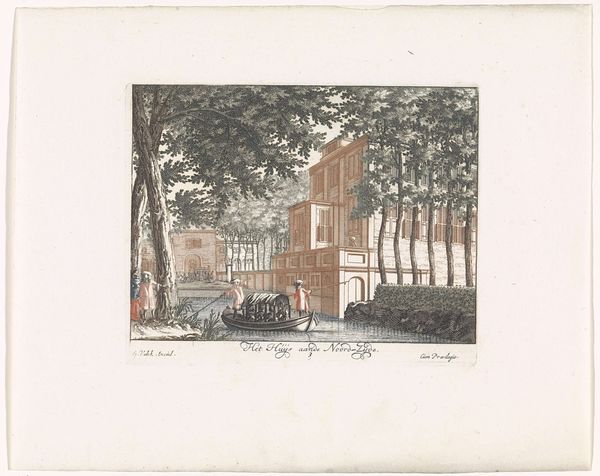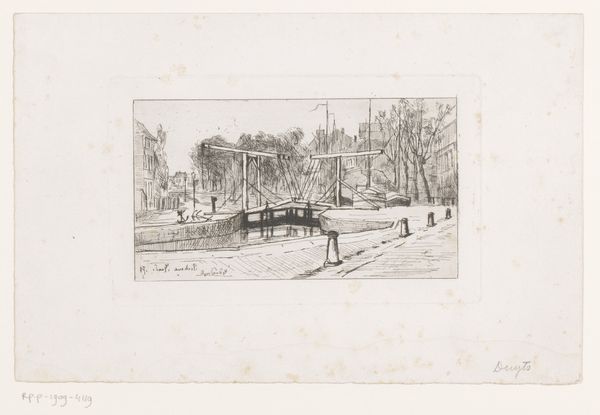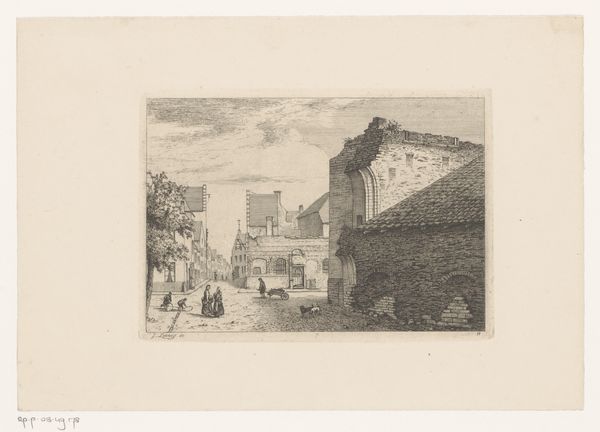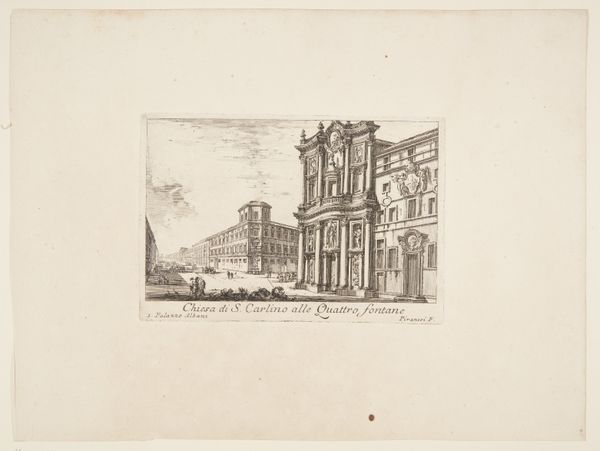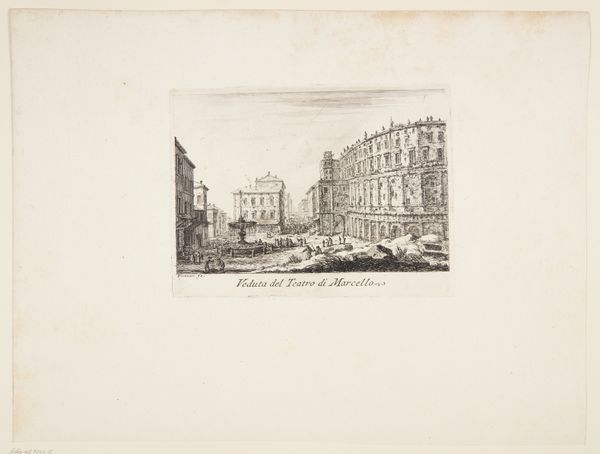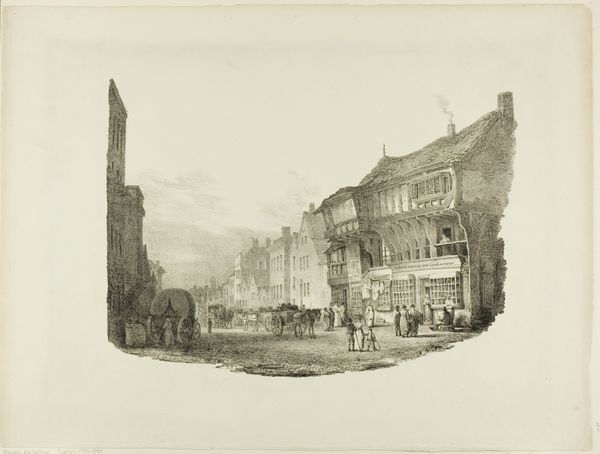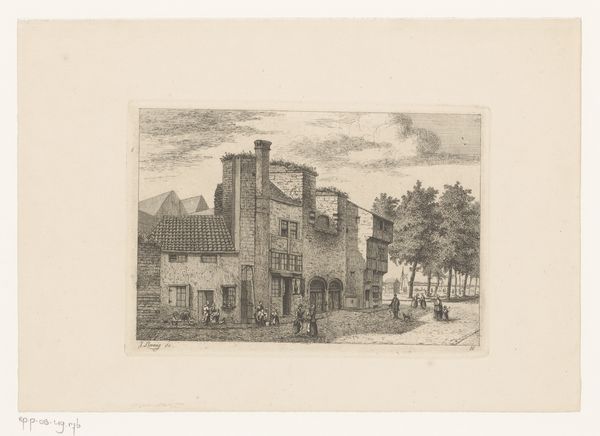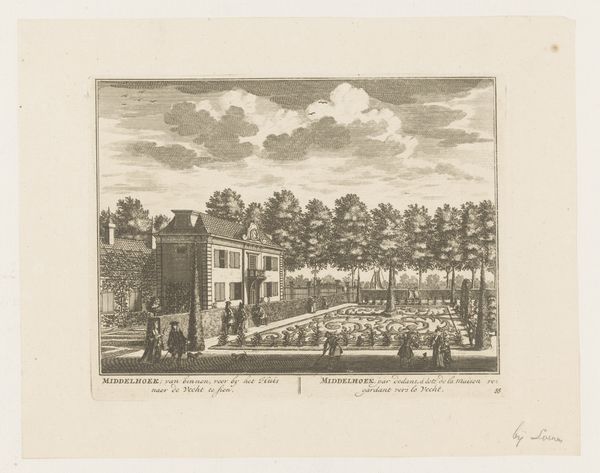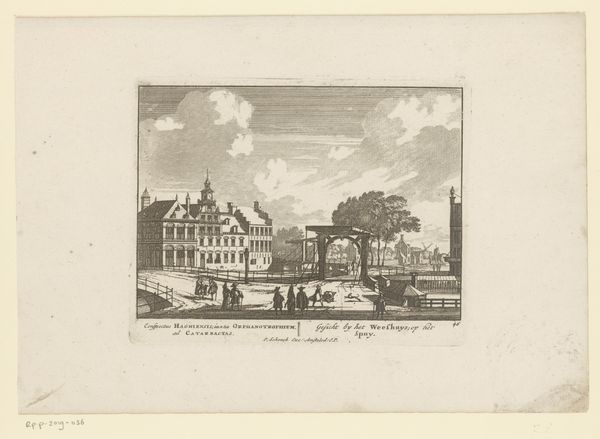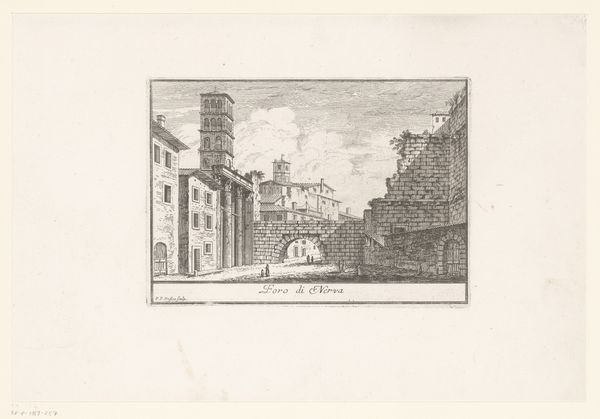
print, etching, engraving
#
dutch-golden-age
# print
#
etching
#
old engraving style
#
landscape
#
etching
#
cityscape
#
engraving
Dimensions: height 183 mm, width 242 mm
Copyright: Rijks Museum: Open Domain
Curator: Here we have Johannes de Vouw's etching, "Gezicht op de achterzijde van de Sint-Jorisdoelen te Rotterdam," dating from around 1694 to 1695. Editor: My first impression is of a stage set; figures arrayed across this paved square framed by quite orderly buildings. There is a sort of measured harmony to it. Curator: Indeed. The print captures the rear of the St. George’s Guildhall, a crucial site for civic life in Rotterdam. These Doelen, or shooting ranges, weren't just for practice; they were key spaces for social gatherings, military exercises, and the expression of civil identity during the Dutch Golden Age. Editor: Thinking about its material creation, etching allowed de Vouw to achieve such fine detail and those gradations of light and shadow that create such depth, right? Curator: Precisely. These details weren't merely aesthetic; they reflected the urban fabric and the values of the burgeoning merchant class that defined Rotterdam’s society at the time. Notice how figures from all walks of life intermingle in the square. Editor: Look at the repetitive, almost industrial, regularity of those window mullions though, that crisp paving and even the regimented planting. Even if hand made, there is certainly the expression of new types of labour here, and emergent mechanical sensibilities, too. Curator: Certainly, though this measured regularity also suggests the era’s evolving sensibilities regarding urban planning and social order, and civic spaces were consciously designed to project power and stability. Editor: Well, even as the artist captured what we see in front of us, its reception and value were shaped by a system of distribution – printmaking as a business in its own right. Curator: And prints like these were often commissioned by the city or by wealthy citizens, further solidifying the connection between artistic production and the exercise of civic authority. The print itself served as a form of visual propaganda, if you will. Editor: Seeing it now, the layering of production from material to the symbolic value that such civic associations bestow adds a certain weight to its open aspect, even a slightly unsettling tone, maybe it's just the slightly stiff characters milling around that lend that to the air... Curator: I appreciate how you see those subtleties within the work. Editor: Likewise! This has given me new things to consider concerning how such artworks and social histories get produced and circulated.
Comments
No comments
Be the first to comment and join the conversation on the ultimate creative platform.
